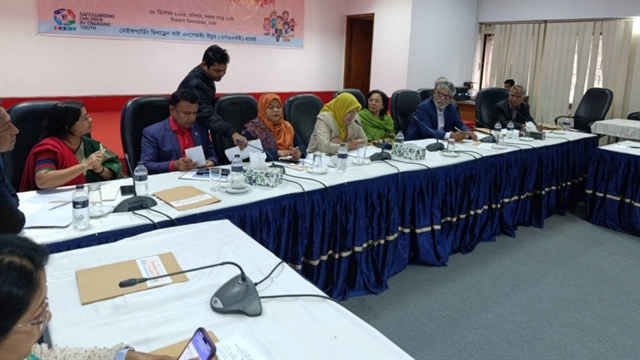 Society
Society

The water level in many parts of the Hồng (Red) River has been rising rapidly since the beginning of the stormy season this month, threatening the lives of island dwellers and those living along the river banks in Hà Nội, and submerging their crops.
HÀ NỘI – The water level in many parts of the Hồng (Red) River has been rising rapidly since the beginning of the stormy season this month, threatening the lives of island dwellers and those living along the river banks in Hà Nội, and submerging their crops.
Prolonged heavy rainfall in the past ten days, and the discharge of water from the Hoà Bình hydro power plant reservoir, raised the water level up to 6.5 metres, iolating those living on river islets and submerging thousands of metres of their crops.
Many households had to make temporary rafts from banana trees as a means of transport to reach the river bank.
Nguyễn Văn Lương, the son of a migrant family from the central province of Thanh Hoá said his family has been living and planting crops on one of the islets for two years. This year’s water led him to make a temporary boat to row from his house to the mainland. It took him about 25 minutes to get to the mainland. On rainy days, it took him nearly an hour to row across the fast-flowing water.
According to the National Hydro Meteorological Forecasting Centre, the country’s northern region, including Hà Nội, and central region are likely to experience heavy rainfall in the coming days when Sonca, the fourth storm of this year, hits Việt Nam today.
Typhoon Sonca to cause heavy rainfall in north and central regionsHÀ NỘI – Typhoon Sonca, the fourth storm of this year, is forecast to make landfall in provinces from Thanh Hoá to Quảng Bình in north-central Việt Nam today before weakening into a tropical low. Hoàng Đức Cường, director of the National Centre for Hydro-meteorological Forecasting, said the storm was expected to move quickly to the northwest packing winds of 40 to 60 kph. Rough seas and strong waves would occur in the coastal region from Thanh Hoá to Quảng Bình provinces. Central provinces such as Quảng Trị and Quảng Ngãi could experience heavy rainfall of between 150 and 250mm, and northern region would have rainfalls of between 50 and 150mm. At the conference on dealing with Typhoon Sonca, Trần Quang Hoài, deputy head of the Ministry of Agriculture and Rural Development’s General Irrigation Department, said all vessels, including small ones, must shelter in safe harbors. About 400 vessels were informed about the storm and were reportedly on their way to a shelter. Hoài also said that Thanh Hoá and Quảng Bình provinces would likely suffer flash floods and needed to be well-prepared to avoid losses. Last week, tropical Storm Talas, the second storm of the season, killed at least eight people and damaged buildings and roads across northern and central regions. Weather forecasters have predicted a particularly stormy typhoon season this year, with 13-15 typhoons and tropical depressions expected to develop over the East Sea. Three to four are likely to make landfall in central Việt Nam. Last year, 10 typhoons and tropical depressions developed over the East Sea, four of which hit the mainland. – VNS
|




